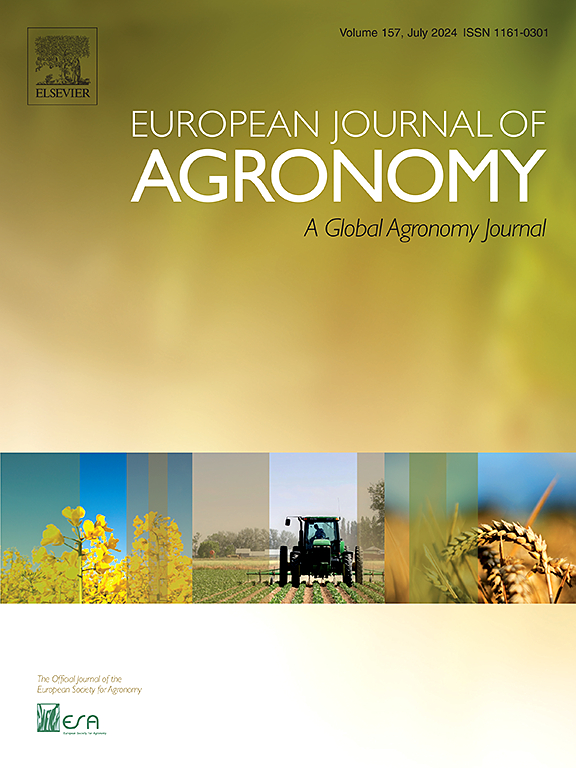Using remotely sensed vegetation indices and multi-stream deep learning improves county-level corn yield predictions
IF 4.5
1区 农林科学
Q1 AGRONOMY
引用次数: 0
Abstract
The increasing global population and climate change pose significant threats to global food security. Machine learning models that use crop growth variables retrieved from remote sensing data offer the potential for early estimates of county-level crop yields, aiding informed decision-making for grain policy, insurance, and food security planning. While vegetation indices and other metrics derived from remote sensing data have been utilized in machine learning models for county-level crop yield estimation, multi-stream data fusion through deep learning remains underexplored. In this study, we trained random forest regression (RFR), support vector regression (SVR), deep neural network (DNN) and a multi-stream deep neural network (MSDNN) using vegetation indices (Normalized Difference Vegetation Index (NDVI) and Enhanced Vegetation Index (EVI)) derived from Moderate Resolution Imaging Spectroradiometer (MODIS) to estimate county-level corn yield in Iowa state, within U.S. corn belt. For MSDNN, NDVI and EVI were used as two separate data streams initially to train the model. Additionally, we evaluated the effectiveness of early-season remote sensing data by dividing the growing season into four intervals: end of May (EoM), end of July (EoJ), and end of September (EoS). As compared to SVR, RFR and DNN, MSDNN model performed better with coefficient of determination (R²) = 0.86. For early season yield estimation, the EoS model yielded the highest accuracy (R² = 0.86), followed by EoJ (R² = 0.66) and EoM (R² = 0.35). These findings indicate that county-level corn yield can be reasonably estimated before harvest, offering valuable insights for informed grain policy decisions.
求助全文
约1分钟内获得全文
求助全文
来源期刊

European Journal of Agronomy
农林科学-农艺学
CiteScore
8.30
自引率
7.70%
发文量
187
审稿时长
4.5 months
期刊介绍:
The European Journal of Agronomy, the official journal of the European Society for Agronomy, publishes original research papers reporting experimental and theoretical contributions to field-based agronomy and crop science. The journal will consider research at the field level for agricultural, horticultural and tree crops, that uses comprehensive and explanatory approaches. The EJA covers the following topics:
crop physiology
crop production and management including irrigation, fertilization and soil management
agroclimatology and modelling
plant-soil relationships
crop quality and post-harvest physiology
farming and cropping systems
agroecosystems and the environment
crop-weed interactions and management
organic farming
horticultural crops
papers from the European Society for Agronomy bi-annual meetings
In determining the suitability of submitted articles for publication, particular scrutiny is placed on the degree of novelty and significance of the research and the extent to which it adds to existing knowledge in agronomy.
 求助内容:
求助内容: 应助结果提醒方式:
应助结果提醒方式:


